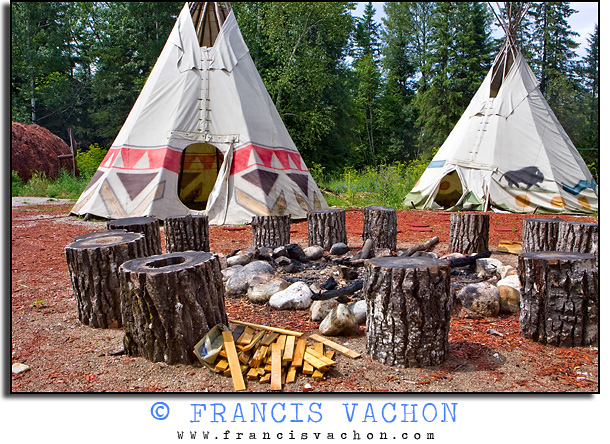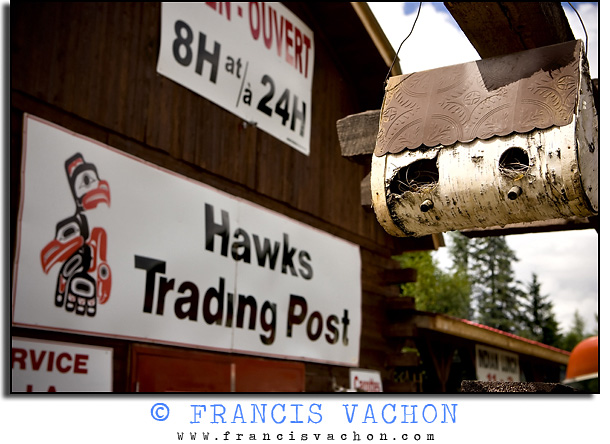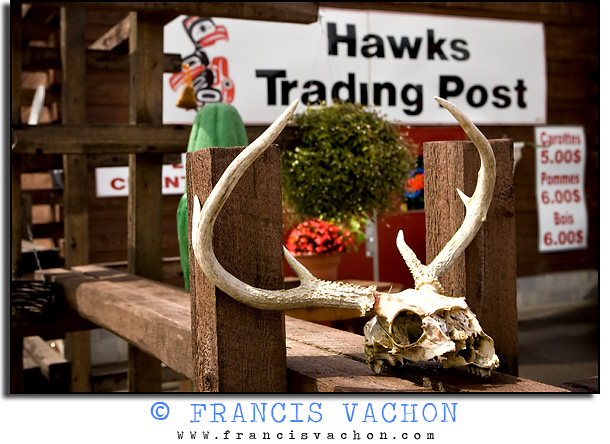
Technical: Canon EOS Mark III, 5 exposures (from -3 to +3) at f22 with a 24-70 at 58mm – ISO 200
Écrit le . Publié dans Mon travail photographique, Paysages. Laisser un commentaire

Technical: Canon EOS Mark III, 5 exposures (from -3 to +3) at f22 with a 24-70 at 58mm – ISO 200
Écrit le . Publié dans Mon travail photographique, Paysages. 8 Commentaires
I had a portrait to do early in the morning, outside. I decided to arrive early – before sunrise – to catch the first glimpse of light hitting the Château Frontenac. I decided to do multiple exposures to create an HDR photo. As you can see, I don’t like the surreal look that many photographers go for when doing HDR. I prefer a more natural look – the one you would not even know it’s HDR if I would not have told you.

Technical: Canon EOS Mark III, 5 exposures (from -3 to +3) at f22 with a 24-70 at 30mm – ISO 200
Écrit le . Publié dans Mon travail photographique, Paysages, Stock photo. 8 Commentaires
|
I finally took some time to edit my photos of Maniwaki. I spent some time in the Native reserve on the outskirt of the town, since anything Native is a good sell as stock image. |
J’ai finalement pris un peu de temps pour faire la postproduction des photos prisent à Maniwaki. J’ai passé un peu de temps sur la réserve amérindienne situé juste à côté, sachant que tout ce qui touche aux Premières Nations se vend bien sur les banques d’image stock |

Tipis (also teepee, tepee) are pictured in a native camp in the Kitigan Zibi Algonquin Native reserve, just west of Maniwaki (Qc) July 29, 2008. Kitigan Zibi (also known as River Desert, and designated as Maniwaki 18 until 1994) is a First Nations Reserve of the Kitigan Zibi Anishinabeg First Nation, an Algonquin band.
Technical: Canon EOS Mark II, 1/400 at f10 with a 16-35 at 27mm – ISO 200

A birdhouse hangs outside the Hawks trading post store in the Kitigan Zibi Algonquin Native reserve, just west of Maniwaki (Qc) July 29, 2008. Kitigan Zibi (also known as River Desert, and designated as Maniwaki 18 until 1994) is a First Nations Reserve of the Kitigan Zibi Anishinabeg First Nation, an Algonquin band.
Technical: Canon EOS Mark II, 1/400 at f10 with a 24-70 at 46mm – ISO 200

An animal skull lies outside the Hawks trading post store in the Kitigan Zibi Algonquin Native reserve, just west of Maniwaki (Qc) July 29, 2008. Kitigan Zibi (also known as River Desert, and designated as Maniwaki 18 until 1994) is a First Nations Reserve of the Kitigan Zibi Anishinabeg First Nation, an Algonquin band.
Technical: Canon EOS Mark II, 1/400 at f7,1 with a 24-70 at 42mm – ISO 200
Écrit le . Publié dans Mon travail photographique, Paysages, Portraits. 16 Commentaires
|
I finally can show you the result of a shooting I did this fall. I was commissioned by World picture News for a new client of them, Public Works, a trade magazine about – you guessed it – public works. The story is about a remotely controlled street-lighting system in the historic neighborhood of Le Trait Carré in Quebec City. Sometime, the photo/art director gives you total freedom for your shot. Sometime, he gives you a general idea of what he wants. And other times, you have a detailed request of what he expects. It was the case for this one. After looking at the sketch made by the client, I went to scout the location and did some test. Then the next day I mimicked the drawing the best I could with the subject, and that’s what they used for the front page. I also gave them some alternate photos, and some street light photos as requested. The subjects provided me with a boom truck, which was a lot of fun. My assistant took some photos of me (note one of my subject laughing as he looks at me in the second photo) and shot a very short video as I was directing the operator to a good position. The boom allowed my to get a different and cool angle. |
Je peux finalement vous parler d’un shooting que j’ai fais cet automne. J’étais en assignation via World Picture News pour leur nouveau client Public Works, un magazine spécialisé (trade magazine) sur les travaux publics. L’article traite d’un système de contrôle à distance pour les lumières de rue dans le quartier historique du Trait Carré à Québec. Parfois, le directeur artistique donnes une liberté total au photographe. Parfois, il ne donne qu’une idée générale de ce qu’il veut. Mais quelque fois, il nous fournit des instructions très précises. C’était le cas ici. Après avoir regardé le dessin fournis par le client, je suis allez étudier les lieux en personne pour faire quelques tests. Le lendemain, j’ai « copié » le dessin du mieux que j’ai pu et c’est ce qui a été utilisé pour la page couverture. Je leur ais également envoyé quelques images alternative et quelques photos des lumières de rue. Mes 3 sujets m’ont fournit un camion-nacelle, ce qui à été très utile et très rigolo. Mon assistante à pris quelques images de la préparation (notez un de mes sujets qui se moque de moi sur la 2e) et à tourné un court vidéo alors que je donnais mes instructions à l’opérateur pour qu’il me positionne au bon endroit. La nacelle m’a permis de prendre quelques photos différentes pour mon client. |
Écrit le . Publié dans Mon travail photographique, Paysages. 2 Commentaires
I was pretty busy last few days. Tuesday morning, I left for Roberval to cover the NHL exhibition game between the Montreal Canadians and the Buffalo Sabres. Roberval won a national contest to be named “Canadian hockeytown” and the chance to host the game. An NHL pro game in a 10,000 citizen town, it is pretty amazing. The light was pretty bad, of course, and we had to shoot at 1/400, 3200ISO and f2.8.
After the game, I headed to Chicoutimi to sleep at an uncle house. I then spent the day in Chicoutimi and La Baie to shoot some stock photo, including the famous “petite maison blanche” (little white house), symbol of the 1996 déluge du Saguenay (Saguenay flood)

Écrit le . Publié dans Mon travail photographique, Paysages. Laisser un commentaire
Sometime, it’s fun to go over the top in Photoshop. It’s totally not editorial-kosher, but when it’s just for fun, why not?
So I was driving by the Rothman plant in Quebec city, stop at a trafic light. I see the beautiful light and the dramatic sky. I crank down the window, shoot a couple of frames. Here is the result.

Technical: Canon EOS 1D mark II, 1/100 at f2.8 with a 50mm prime lense – ISO 400, no flash